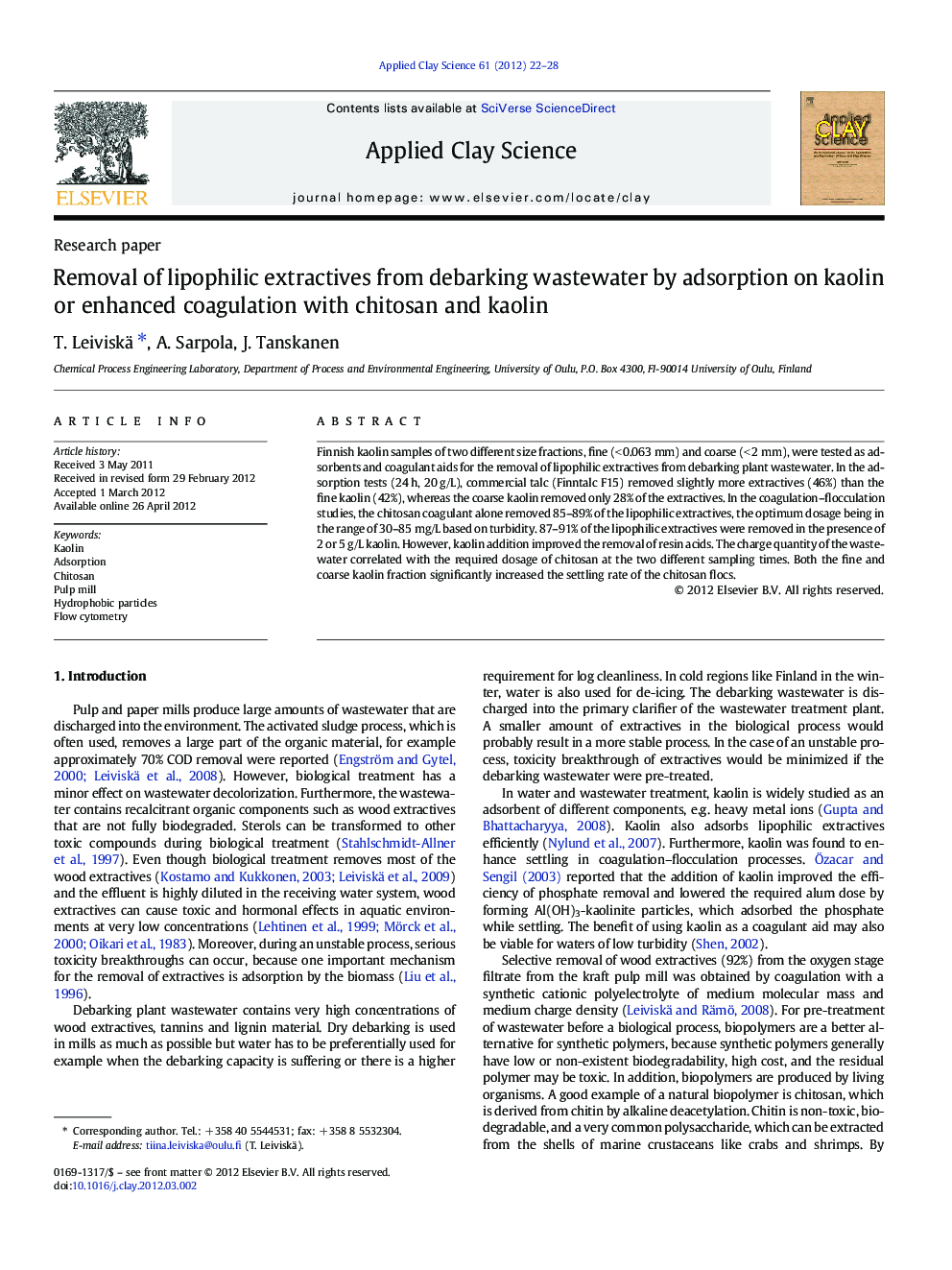| Article ID | Journal | Published Year | Pages | File Type |
|---|---|---|---|---|
| 1695268 | Applied Clay Science | 2012 | 7 Pages |
Finnish kaolin samples of two different size fractions, fine (< 0.063 mm) and coarse (< 2 mm), were tested as adsorbents and coagulant aids for the removal of lipophilic extractives from debarking plant wastewater. In the adsorption tests (24 h, 20 g/L), commercial talc (Finntalc F15) removed slightly more extractives (46%) than the fine kaolin (42%), whereas the coarse kaolin removed only 28% of the extractives. In the coagulation–flocculation studies, the chitosan coagulant alone removed 85–89% of the lipophilic extractives, the optimum dosage being in the range of 30–85 mg/L based on turbidity. 87–91% of the lipophilic extractives were removed in the presence of 2 or 5 g/L kaolin. However, kaolin addition improved the removal of resin acids. The charge quantity of the wastewater correlated with the required dosage of chitosan at the two different sampling times. Both the fine and coarse kaolin fraction significantly increased the settling rate of the chitosan flocs.
► 42% of the lipophilic extractives were removed with fine kaolin (< 0.063 mm). ► Talc was a somewhat better adsorbent for lipophilic extractives than kaolins. ► Chitosan alone removed 85–89% of the lipophilic extractives. ► Kaolin removed only 2% more lipophilic extractives when used as a coagulant aid. ► A higher sedimentation rate of chitosan flocs was achieved with kaolins.
